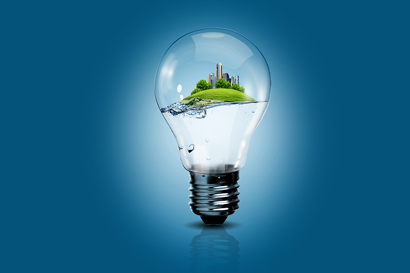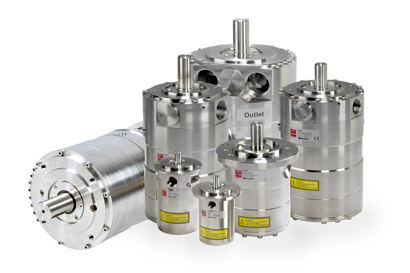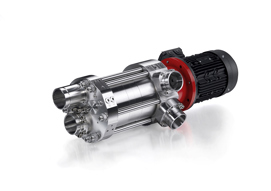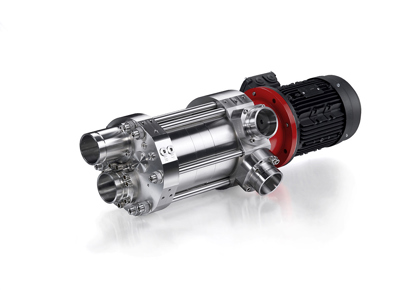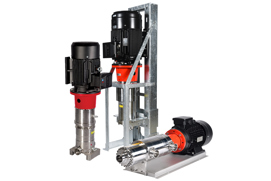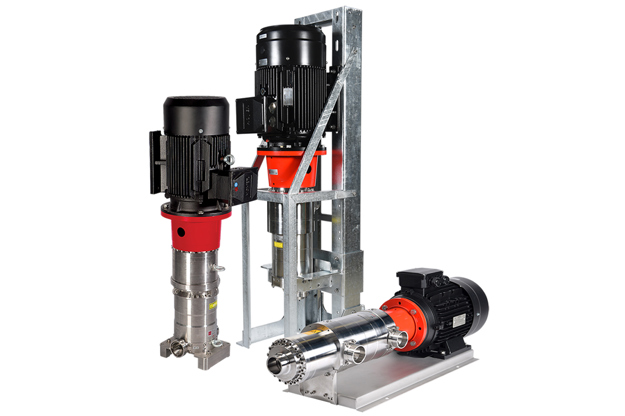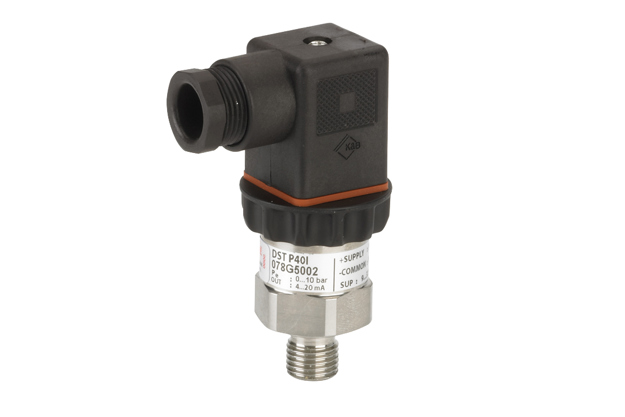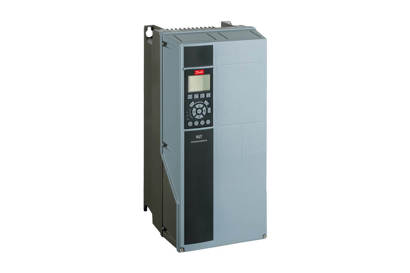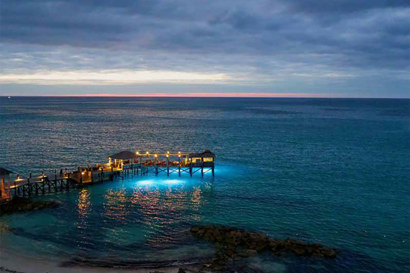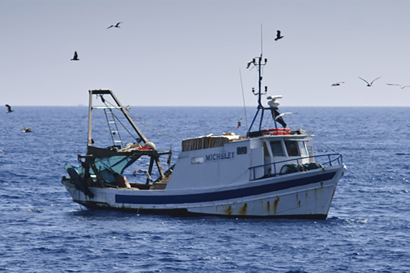Over the last century, and especially during the last few decades, desalination has become significantly more energy efficient. As we pointed out in our blog, A brief history of the energy intensity of desalination, since the first desalination plant appeared in 1928, technological innovation has driven down the specific energy consumption (SEC) from nearly 30 kWh/m3 for multi-stage flash thermal distillation to about 2 kWh/m3 for SWRO.
But as much of the installed base of desalination plants was built before the latest energy-saving technology was developed – in particular isobaric energy recovery devices (ERDs) and the most efficient high-pressure pumps – a good share of existing desalination capacity is more energy-intensive than it could be. In fact, much more.
Retrofitting desalination’s installed base for energy efficiency would help decarbonization and enable huge financial savings
In an article we created for Global Water Intelligence, we calculated the potential savings if the worldwide installed base of desalination plants (21,755 plants in all, with a combined capacity of 128 million m3) was as energy-efficient as it could be, i.e., with an SEC of 2 kWh/m3, the current “state of the art.” Of course, this exercise was based on some assumptions, and the results must be taken with a grain of salt. Nonetheless, this ballpark estimate reveals the striking potential of retrofitting for energy efficiency:
- Reduced energy consumption: Power plants would need to produce 73% less energy annually for desalination, or 247 tWh less than they do now.
- Financial savings: Plant owners and operators would save €34.5 billion annually.
- Decarbonization: The planet would be spared 111 million tons of CO2 annually – more, for example, than the entire country of Bangladesh emits each year.
In addition to these very significant energy savings, there are other good reasons to retrofit older SWRO plants. For example, the latest membrane technologies require less pressure than their predecessors. In addition, their higher recovery rates mean that less feed water is used and fewer chemicals are required for backwashing, reducing desalination’s impact on marine environments.
What do desal plant retrofits typically involve?
Everything mechanical eventually wears out and needs to be repaired or replaced. But retrofits for energy-saving focus on a handful of equipment types and configurations.
- ERDs: If a plant has no ERDs or relies on non-isobaric technology such as Pelton turbines or turbochargers, then ERDs are always at the top of the list. As we described in our blog, Understanding the cost drivers of SWRO, ERDs alone can save up to 60% of total energy costs.
- High-pressure pumps: Creating appropriate pressure requires 80% of an SWRO plant’s electricity usage. Replacing centrifugal pumps with axial piston technology reduces overall energy consumption by 20-30%.
- Motors, pipes, and fittings: If ERDs are installed where none were before, then motors, pipes and fittings may need to change, too, in order to maintain consistent flow levels.
- Membranes: As noted above, the latest membrane technologies require less pressure (i.e., less energy) in addition to requiring fewer chemicals.
- Trains: Retrofits that include replacing Pelton turbines with isobaric ERDs often result in combining trains to continue using the installed high-pressure pumps and motors. While this has the advantage of saving cost, it has the disadvantage of decreasing redundancy in case of breakdowns or shutdowns due to maintenance.
If retrofitting is such a good idea, why don’t more plant owners and operators do it?
Given the striking potential of retrofits to save energy, one would think that all desalination plant owners with older technology would already have switched out their old technology for the latest, best-in-class alternatives. Indeed, many have, and even more will do so in the future. Still, many others continue to wait.
Why? Poor awareness of the benefits of retrofitting, reluctance to be an early adapter of new technology, and the inertia of not fixing what hasn’t broken all matter. But the biggest reasons are CAPEX and payback time. As the old saying goes, it takes money to save money.
For some plant owners, access to the capital required to retrofit their plant is problematical. For others, a payback time of anything more than a year raises doubts – even though they could save energy, money, and CO2 over a longer time horizon. As we pointed out in our blog, Understanding SWRO’s total cost of ownership, relatively small CAPEX investments can have an outsized impact on OPEX and TCO. Still, not all desalination investment decisions are made with a TCO mindset.
We will see more retrofits of desalination plants in the future
As the world is increasingly focused on energy efficiency and having enough water for growing populations and industry, retrofits of desalination plants will be increasingly relevant in the future. Much of the installed base would benefit from them, as money saved is money earned, just as CO2 emissions that are prevented do not add to global warming.
Climate change and growing awareness of the critical importance of decarbonization make the case for retrofits increasingly compelling. If the financial reasons outlined in this blog do not motivate owners and operators to retrofit for greater energy efficiency, carbon pricing and other forms of governmental regulation will likely add additional incentives.
Indeed, subsidies are already one way to encourage retrofits. Government action is important to shift attitudes and encourage action – see for example our blog, Energy-efficient SWRO should be part of the European Green Deal, to learn more about how the EU, for example, could encourage the transition from low-efficiency to high-efficiency desalination.
Related blogs
Read more about our solutions for desalination
-
if (isSmallPicture) {


 High-pressure pumps for SWRO applications
High-pressure pumps for SWRO applicationsThe range of high-pressure APP pumps is optimized for both landbased, off-shore and marine sea water reverse osmosis applications. Available with or without motor.
-
if (isSmallPicture) {


 Energy recovery device for medium to large SWRO applications
Energy recovery device for medium to large SWRO applicationsThe first active ERD for medium and large plants integrates highly effective isobaric pressure exchangers with a low-voltage motor to eliminate the risk of rotor overspin, reduce mixing and biofouling, and facilitate smarter automation. Covering train sizes from 1,500 m3/day and above.
-
if (isSmallPicture) {


 iSave® energy recovery devices for high-pressure membrane applications
iSave® energy recovery devices for high-pressure membrane applicationsWith a 3-in-1 design that integrates highly effective isobaric pressure exchangers with positive displacement booster pumps and electrical motors, iSave® ERDs deliver big energy savings in small spaces. Covering train sizes from 200-3,000 m3/day
-
if (isSmallPicture) {


 DST P40I titanium pressure transmitter for use in corrosive environments and with aggressive media
DST P40I titanium pressure transmitter for use in corrosive environments and with aggressive mediaFor use in corrosive environments and with aggressive media, Danfoss offers the robust DST P40I pressure transmitter made of Titanium and with ceramic pressure sensing element. DST P40I is optimized for use in applications such as desalination systems, seawater cooling, and chemical processing.
-
if (isSmallPicture) {


 VLT® AQUA Drive FC 202
VLT® AQUA Drive FC 202VLT® AQUA Drive FC 202 controls all types of pumps and comes equipped with a cascade controller.

